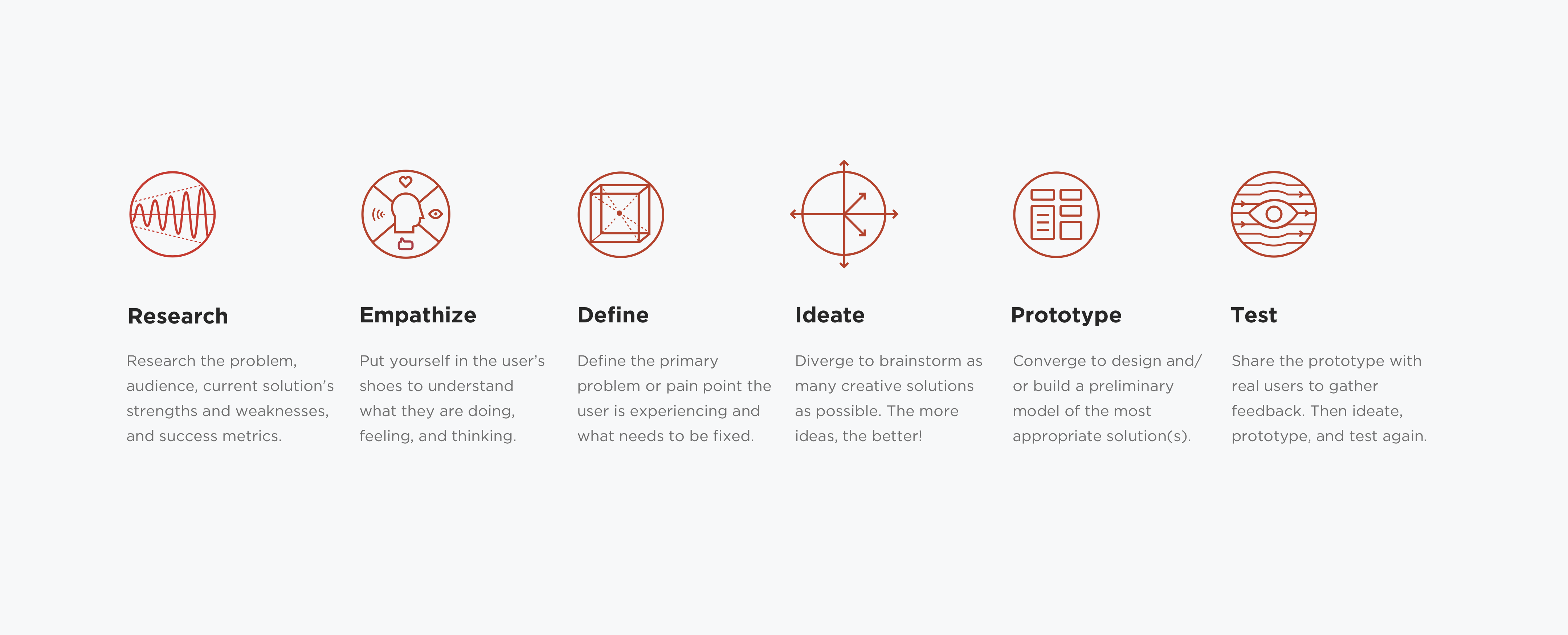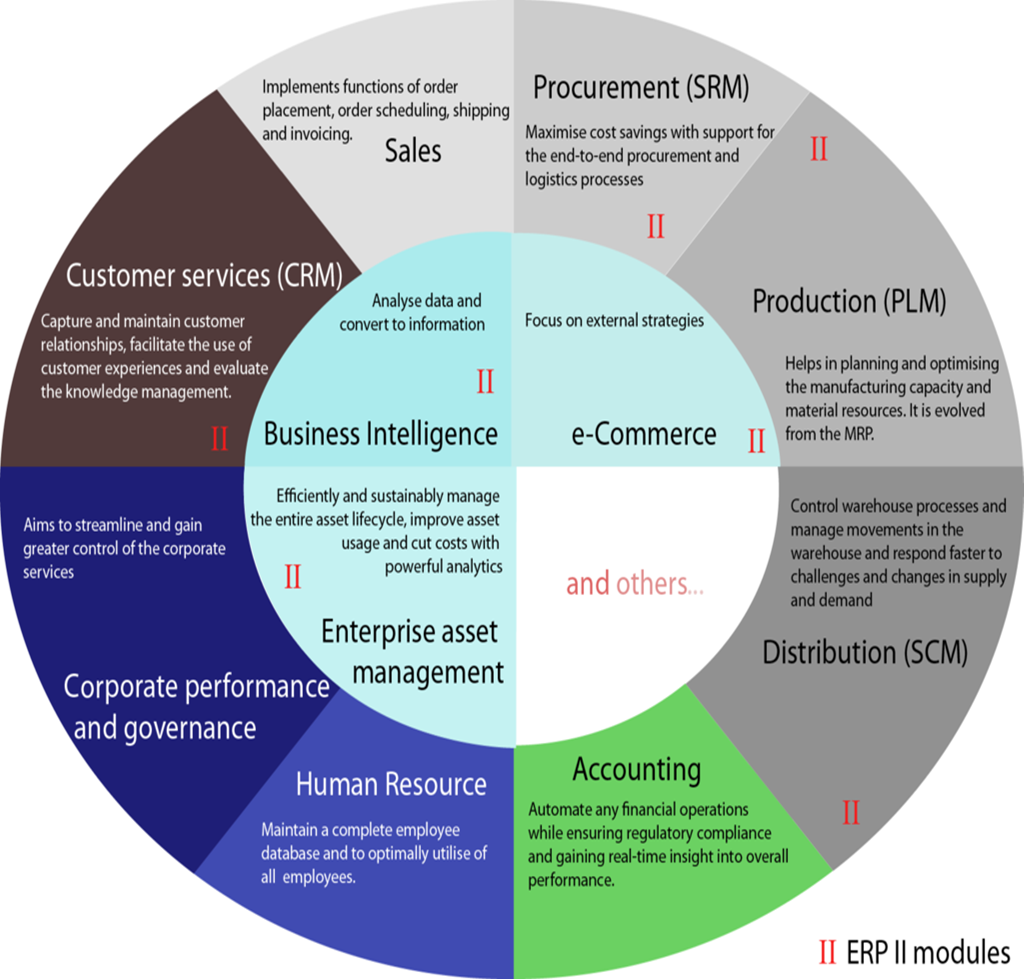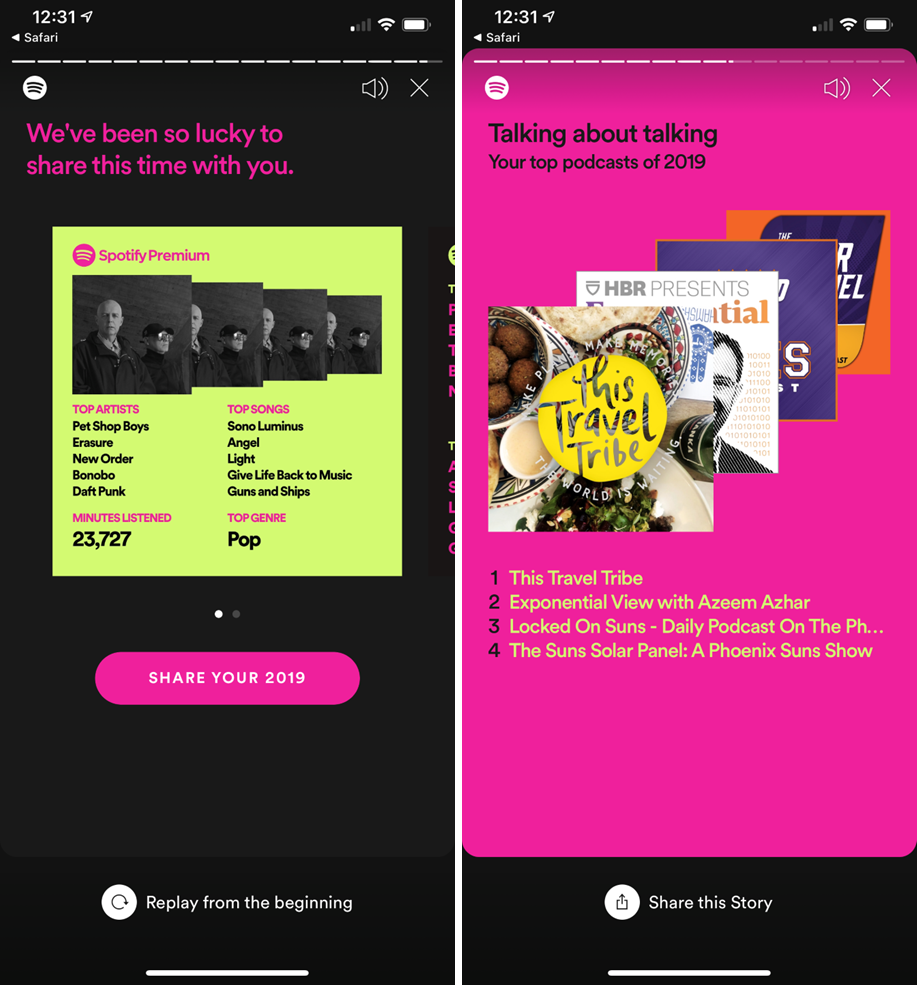3 UX Design Predictions for 2020

2019 has been an exciting year for product innovation, design, and user experience. Brands like Microsoft leveraged a new focus on cloud-based user experience to continue their reemergence to prominence, while controversy swirled around Samsung’s foldable phone and Tesla’s Cyber Truck. Disney was able to salvage its launch of Disney+, despite reports of poor customer experience with too much server load on launch day. Regardless of whether the brand made a big splash or fell flat, we see product hints that organizations are reaching new levels of UX maturity. Our 2020 predictions highlight a few of the ways that companies are investing like never before to create meaningful experiences for their customers.
1. Companies will use prototyping to de-risk product development and UX
One trend seems to be consistent when we speak with innovation leaders: Organizations are looking for ways to innovate faster, while mitigating the inherent risk in taking chances on new products and design. The balance between speed of innovation and risk isn’t new. What is new is the number (and size) of organizations embracing design thinking as THE solution to de-risk product design. Specifically, we notice prototyping and testing, two key phases of design thinking, becoming increasingly popular.
In 2008, Eric Reis published The Lean Startup, a book that urged entrepreneurs to follow a stepwise approach to product development and management. The business practices originally set forth in The Lean Startup have combined with Lean UX practices and are being implemented at much larger organizations today. Small organizations and industrial design shops have been utilizing prototyping for decades, but now, we’re seeing design thinking proliferate into other departments of large organizations. It’s even beginning to influence C-suite decision making and resource allocation.
For example, enterprises that previously only built prototypes for their physical or consumer-facing products are now building infrastructure to prototype digital products, employee facing interfaces, and reporting tools–all in the interest of de-risking the process of innovation.
“Prototypes slow us down to speed us up. By taking the time to prototype our ideas, we avoid costly mistakes such as becoming too complex too early and sticking with a weak idea for too long.” - Tim Brown, Change by Design
Consider Facebook, whose famous motto “Go Fast and Break Things” is rooted in the prototype-and-test methodology. Mark Zuckerberg recently explained that Facebook’s speed in the early days injected risk into their systems because they didn’t have the proper structure in place to execute. Zuckerberg recognized early on that their innovation would be a function of their ability to test new UX and features in a stable environment. Today, “going fast” at Facebook is the result of a calculated approach to build a stable testing infrastructure, helping engineers speed up their prototyping.
Zuckerberg explained his reasoning, “We thought, ‘OK, we need a new strategy to enable us to move fast.’ And what we came up with was: We’re going to do this by building the best infrastructure. So, an engineer who comes from any company is going to be able to ship their product faster here—and test it better, and move faster, at Facebook than anywhere else in the world. So that’s what we mean by “Move fast with stable infrastructure.”
"An engineer who comes from any company is going to be able to ship their product faster here, and test it better, and move faster...at Facebook, than anywhere else in the world." - Mark Zuckerberg
The result? At any given time, there are more than 10,000 different live versions of Facebook. Each version is testing user experience, levels of engagement, etc., and Facebook is able to ship the best-performing UX instantly.
Not every team has access to the development resources of Facebook, and the prototyping process is usually easier than building an entire team of engineers.
Thought leadership like Google Venture's (GV) Design Sprint process has mainstreamed the product design sprint, with an emphasis on ideation and learning within a sprint. GV asserts that alignment within a sprint, and focus on low fidelity prototyping can actually help organizations speed up their process. The diagram below shows the "shortcut" teams can take when ideating on low fidelity prototypes.
The GV Sprint:

At Drawbackwards, our approach mirrors multiple aspects of the GV process. Companies should focus on great upfront research, choosing the correct fidelity of prototype, and then have systems in place to interpret the results. We find that many of our clients find themselves between the "Define" and "Ideate" steps. We help unblock the product design process by applying initial strategy to the ideation stage, and then by developing structure in our partner's prototyping and testing methodology.
The Drawbackwards Approach:

2. Focus on Data Analysis and Interpretation Systems
“Big Data” has been a buzzword for most of the last decade, and we will see two words added to “big data” in 2020: “actionable” and “interpretable.” The prevalence of digital business and speed of computing have improved most organizations’ abilities to leverage their data, and this will place a premium on the UX professional’s ability to build dashboards and systems that help users interpret data.
Today, there is a lot of pressure on UX and design teams to build interfaces that allow common users to access and interpret data. The possibilities are virtually endless. If a data point can be captured, it can be analyzed, and placed into a chart or interface that any average person can access.
The Big Data Dark Ages Although it was a buzzword, big data wasn’t accessible to average employees at most firms until relatively recently. Big data was siloed, only available to those with specialized roles or skills to decode the information via custom queries or “data dumps.” Large organizations collected and stored data that were reachable only by engineers, developers or quants. The power of data and data analysis rested only with those individuals that could work with the raw information.
Finance and marketing leaders may have had access to simple reporting to help make business decisions, but most of the rank and file employees were probably left in the dark. At best, a general user would gain access to information via custom queries that were built by analyst teams, an output in an Excel dashboard or another similar software. At worst, a user would know that the data existed, but have no way to access it. Most companies’ access to data was functional, but certainly didn’t reach the usable or comfortable level of the Experience Success Ladder.
The Rise of Enterprise and Reporting Software Although some readers will still relate to the dark ages described above, access to data and information at most organizations has improved over the past five years. Still, users find themselves losing productivity hours in data synthesis vs. data analysis. That is, users spend more time searching or compiling data from disparate sources, than they spend making decisions based on the data. Luckily, technology platforms are working to solve these problems.
Consolidation in the enterprise software space is allowing organizations to pull all of their business services into singular platforms that manage all aspects of their customer and business lifecycle. Organizations like SAP, Oracle, IBM, and Salesforce are allowing users access to customer lifecycle information in real time. This access simply didn’t exist previously.
ERP platforms are handling increasingly more business functions, as shown in this graphic:
 (Source: Wikipedia)
(Source: Wikipedia)
The amount of customization and complexity available in enterprise software creates a UX opportunity. Every organization has different business drivers and each department within the organization may have different reporting and analysis needs. UX professionals and engineers will come together to help connect disparate systems, but also to identify the proper interfaces and visualization of data so that all users can interpret data outputs.
Data interpretation should:
- Keep proprietary data safe, including customer data
- Allow users to access data on the correct devices for their job function
- Allow users to use the data to affect or understand business outcomes
- Include visualization that creates environments where the user can drive business or customer-centric outcomes
3. Content that emphasizes meaningful relationships with products
At Drawbackwards, our end goal is to help clients create meaningful experiences for their users. A meaningful experience is where 5-star reviews and positive NPS scores come from. Alignment between content and UX is a competitive advantage, and we’ll see more organizations improve in this regard in 2020.
Spotify has their UX and content strategy nailed right now. Consider their end of year “Wrapped” campaign. It’s a look back at a user’s Year in Music, but the user experience and content come together in a way that is truly unique.
Wrapped includes animation, graphs, charts, and colors that standout not only because they look appealing and are easy to share but because of the underlying story of value that they create. The design is interactive, and the mobile interface even feels like scrolling through a friend’s story feed on Instagram. The user experience mirrors the familiar format of Instagram and Snapchat, with each tile so easy to share on those platforms. Spotify deliberately designed content that was compelling enough to share. This alignment between content and design and user experience enabled Spotify’s customers to become brand evangelists.
Even more important, the content highlights the depth of the user’s relationship with Spotify. The content helps you see how much time you spend with the product and how much you are enjoying that. The content celebrates the top experiences you have with the product and points out how meaningful it is.

The headline perfectly sums it up: “We’ve been so lucky to share this time with you.”
Consider also Red Bull’s continued push to create meaningful content for its core audiences. Red Bull Media House launched in 2007 and has become a leader in the multi-device action sports content world. The brand has positioned its media arm right at the intersection of lifestyle, culture, and events where their core audiences are. At times, it’s difficult to tell whether Red Bull is a beverage company, a media company, an event operator, or just a major sponsor of action sports teams. In 2012, Digiday explained that Red Bull had become “a media company that happens to sell soft drinks.” More brands are focusing on building content strategies, but Red Bull was one of the first-to-market with the truly integrated approach. The strategy has paid off, as Red Bull now sits at #71 on 2019’s Forbes Most Valuable Brands list.
“We don’t believe in traditional marketing; we don’t do big television commercials, we’ve never done that,” says Gerrit Meier, CEO of Redbull Media Network. “We believe that we can activate through events and great content, and that’s where we’d rather spend our money. So doing that and having brand relevance absolutely still drives the core business.”
"We believe that we can activate through events and great content, and that’s where we’d rather spend our money." - Gerrit Meier, CEO of RedBull Media Network
The strategy is sound, but the design and user experience behind the branding is actually the secret to Red Bull’s success. Their alignment with action sports occurred early and often, but high quality video and documentary shoots of intense action create the correct user experience that stays true to their “Red Bull Gives You Wings” mantra.
Red Bull’s TV, media, and partnerships experience is immersive, which makes it meaningful. The brand’s ability to influence within the sports and events where their core customer spends time has become a differentiator. More brands will produce and strategize for content that creates experiences as their core marketing and content strategies in 2020. Attention is the highest form of currency in the experience economy, and Red Bull is proof that investment in attention-driving experiences pays off long term.
2020: The year of achieving meaningful connections
From increased investment to increased savvy in how to deliver great experiences, 2020 and the coming decade will be about creating value through delivering meaningful moments. Anything less will die. Business dashboards that provide the right information at the right time to the right user, consumer apps that celebrate each joyful interaction, brands that don’t market and sell but create moments to experience with them and create shared joy. This is the new bar. And what a fun decade to come!
To learn more about the trends we’re seeing in UX design or discuss how we can help your business break out of the bubble, get in touch with us.